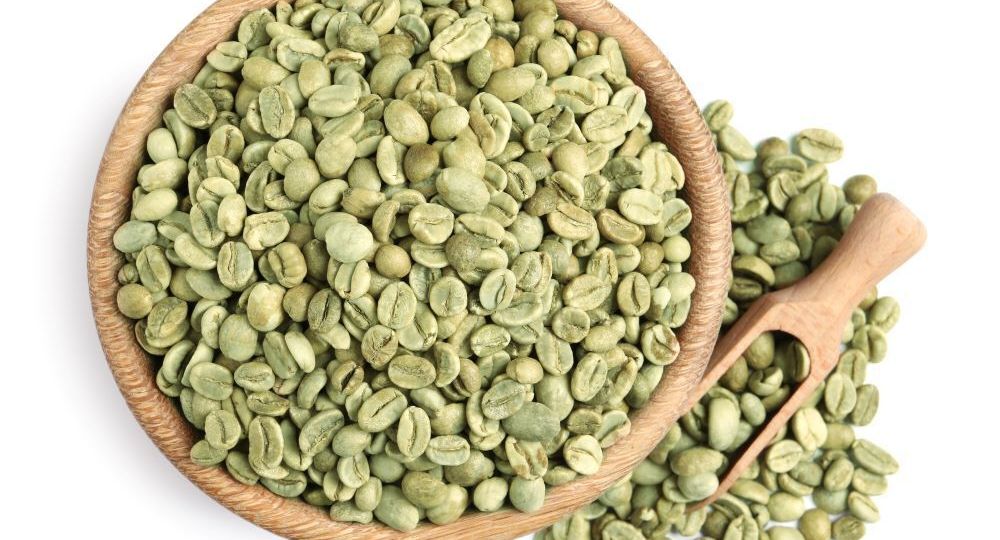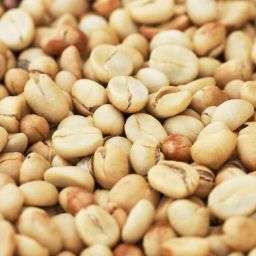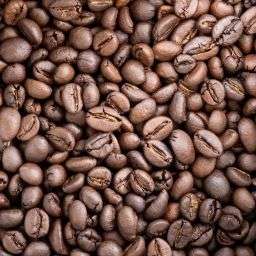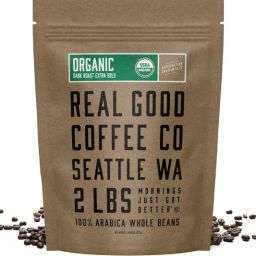
Specialty grade green coffee beans represent the pinnacle of coffee quality, defined by their scoring of 80 or above on a 100-point scale by the Specialty Coffee Association (SCA). This designation signifies beans that have been meticulously cultivated, harvested, and processed to meet the highest standards of quality.
Unlike their lower-graded counterparts, specialty beans exhibit unique flavor profiles, impeccable integrity, and are virtually free from defects. The rigorous evaluation process ensures that only coffee beans meeting these strict criteria are labeled as specialty grade, setting them apart as the cream of the crop in the coffee world.
Key Takeaways
- Importance of Defects: The presence of defects significantly impacts a bean’s classification, with beans exhibiting zero defects being essential for achieving specialty status.
- Processing Methods: The method by which the beans are processed (e.g., washed, natural, honey) plays a critical role in the development of their flavor profile, directly influencing their grade.
- Geographical Origin: The origin of the beans, including the country, region, and even the specific farm, contributes to their unique taste characteristics, further delineating their quality and specialty status.
The Importance of Defects in Grading
In the world of green coffee beans, defects are a primary consideration in grading, categorized into major, minor, and exotic types. Each category impacts the overall quality and the cup quality of the beans differently:
- Major Defects: These are significant flaws that drastically reduce the quality of the coffee, potentially imparting undesirable flavors such as sourness or a dirty taste. Examples include beans with insect damage or those affected by secondary fermentation.
- Minor Defects: Minor defects may not significantly alter the cup’s quality but are imperfections nonetheless. These can include issues like broken beans or minor insect holes.
- Exotic Defects: Rare and unique, exotic defects are unusual but are considered when grading beans. They might encompass foreign materials such as sticks or even animal hair.
The categorization of these defects is critical in determining a bean’s suitability for the specialty grade. Only those with minimal to no defects can aspire to achieve the coveted status, ensuring that the final cup reflects the highest standards of quality and flavor.
Geographic Origin and Its Impact
The geographic origin of green coffee beans plays a pivotal role in determining their quality, flavor, and aroma. Factors such as soil composition, climate, and elevation contribute significantly to the beans’ inherent characteristics. For instance, coffee grown in volcanic soil, like that found in parts of Central America, often exhibits a distinct brightness and complexity.
Similarly, the climate—ranging from tropical to subtropical—impacts the beans’ growth cycle and maturation, influencing their flavor profile. Elevation is another critical factor; higher altitudes often lead to denser beans with more concentrated flavors, ranging from floral to fruity or even nutty, depending on the region. These geographic elements combine to create a coffee’s terroir, a French term used to describe the environmental conditions that give agricultural products their unique qualities.
Processing Methods Explained
The processing method applied to green coffee beans is crucial in determining the final grade and overall cup quality. Common methods include washed (or wet), natural (or dry), and honey (or semi-washed) processing:
- Washed Processing: Involves removing the coffee cherry’s outer layers before drying the beans. This method is known for producing coffee with a clean, bright flavor profile and higher acidity levels. It emphasizes the bean’s inherent characteristics without additional flavors from the fruit.
- Natural Processing: Beans are dried with the fruit still intact, often resulting in a sweeter, more fruit-forward cup with lower acidity. This method can introduce complex flavors but requires careful monitoring to prevent over-fermentation and spoilage.
- Honey Processing: A hybrid approach where some of the mucilage (the cherry’s sticky substance) is left on the bean during drying. This method can result in a cup that balances sweetness with acidity, offering flavors that can range from subtle fruit notes to rich, syrupy profiles.
Each processing method impacts the coffee’s final sensory attributes, influencing its classification and potential as a specialty grade product.
The Role of Water Activity in Coffee Quality
Water activity (aw) in green coffee beans is a critical factor affecting their quality, particularly regarding spoilage and the production of mycotoxins. Water activity measures the free moisture in the beans, indicating the potential for microbial growth. Beans with high aw are more susceptible to mold and the development of mycotoxins, such as ochratoxin A, which can lead to significant quality degradation and health risks.
The optimal moisture content for green coffee is typically around 10-12%, balancing the need to minimize microbial risk while preserving the beans’ flavor and quality. Proper drying and storage practices are essential to maintain appropriate moisture levels, ensuring the beans’ longevity and preventing spoilage. By controlling water activity, coffee producers can safeguard the quality of their beans, contributing to the overall excellence of the final product.
Different Grades of Coffee
The classification of green coffee beans into grades is essential for assessing their quality and market value. There are generally five recognized grades of coffee:
- Specialty Grade: Represents the highest quality of coffee, with beans achieving a score of 80 points or above on a 100-point scale. Specialty grade beans must have zero primary defects and no more than five full secondary defects per 350 grams. These coffees exhibit unique flavor profiles and are free from any faults that could detract from the overall cup quality.
- Premium Grade: Slightly below specialty, premium grade coffee still offers high quality but allows for a slightly higher number of defects. It is characterized by a small percentage of beans with minor imperfections but maintains a high standard in taste and appearance.
- Exchange Grade: Coffee beans that meet the minimum quality standards for specialty trading but with a higher allowance for defects and inconsistencies. This grade is often used in commercial exchanges and may include beans of varied sizes and colors.
- Below Standard Grade: These beans have significant defects and inconsistencies, affecting their quality and flavor. This grade is generally considered inferior and is less desirable for specialty coffee producers and consumers.
- Off-Grade: The lowest quality of coffee, with numerous visible defects and off-flavors. These beans are typically unsuitable for specialty coffee markets and are often used for instant or heavily processed coffee products.
Defects play a crucial role in these classifications, with the number and severity of defects directly impacting a bean’s grade. Specialty and premium grades require rigorous adherence to quality standards, ensuring the final product offers the superior taste and experience expected by consumers.
The People Behind Specialty Coffee
The journey of specialty coffee from farm to cup involves several key professionals, each contributing to the final product’s quality:
- The Coffee Farmer: Responsible for growing and harvesting coffee, the farmer’s expertise in cultivation practices significantly impacts bean quality. They focus on producing defect-free beans through careful management of their crops.
- The Green Coffee Buyer: Specializes in selecting the highest quality beans for roasting and sale. They rely on their extensive knowledge of coffee grading and their palate to identify the best beans through cupping sessions.
- The Roaster: Plays a pivotal role in developing the bean’s flavor profile. Through precise roasting techniques, they transform green coffee into aromatic, flavorful beans ready for brewing.
- The Barista: The final link in the chain, baristas expertly brew the coffee, showcasing the unique characteristics of each batch. Their skill in brewing techniques ensures the consumer experiences the full flavor potential of the coffee.
Each role is integral to the specialty coffee process, contributing to the bean’s journey from its origin to the consumer’s cup, ensuring quality and consistency at every stage.
Factors Influencing Coffee Grades
Several factors impact the grading of coffee beans, including:
- Shape: Uniform and well-formed beans are preferred, as they roast more evenly and produce a consistent flavor profile.
- Defects: The presence and number of defects, such as insect damage or fermentation spots, significantly affect a bean’s grade. Fewer defects result in a higher grade.
- Processing Methods: The method used to process the beans (washed, natural, honey) influences the final taste and quality. Each method has unique effects on the bean’s moisture content, flavor profile, and appearance.
These factors are carefully considered during the grading process, determining the coffee’s classification and overall quality. Specialty grade coffee is distinguished by its superior shape, minimal defects, and processing quality, ensuring an exceptional coffee experience for the consumer.
FAQs
Frequently Asked Questions
What impact do specialty coffee grades have on quality and flavor? Specialty coffee grades, especially those rated 80 points or above, ensure the highest quality and flavor. These beans have undergone rigorous evaluation to meet strict standards, resulting in unique and desirable flavor profiles without defects that could detract from the coffee’s overall experience.
How is coffee graded? Coffee is graded based on a comprehensive evaluation that includes the assessment of physical defects, bean size and shape, and sensory characteristics such as flavor, aroma, acidity, and body. Specialty grade coffee must score 80 points or higher on a 100-point scale and exhibit minimal defects.
Why are defects important in coffee grading? Defects significantly impact a coffee bean’s grade because they can adversely affect the flavor, aroma, and overall quality of the coffee. The presence of defects such as insect damage, fermentation, or irregularities in bean size and shape can lower the coffee’s grade, distinguishing specialty grades from lower quality beans.
Final Thoughts
Understanding specialty grade green coffee beans is crucial for anyone looking to experience the best in coffee quality and flavor. The grading process plays an essential role in quality assurance, ensuring that only the finest beans reach the market.
For consumers, knowledge of these grades facilitates informed purchasing decisions, allowing for the selection of coffee that meets their expectations for taste and excellence. Ultimately, the meticulous grading of green coffee beans enhances the coffee experience, from the careful selection of beans to the final sip of a perfectly brewed cup.









